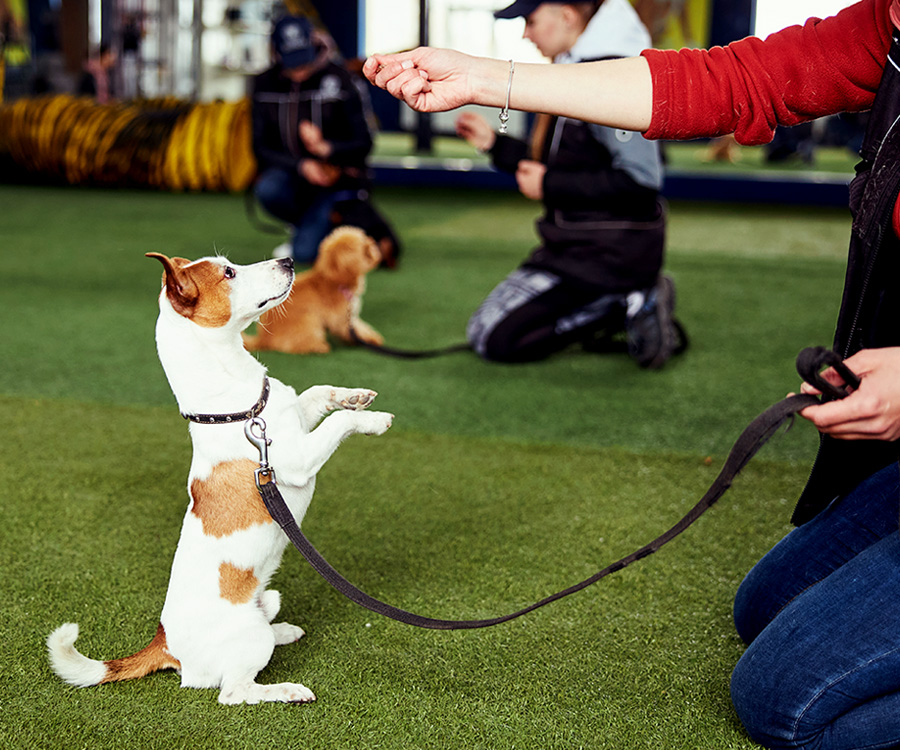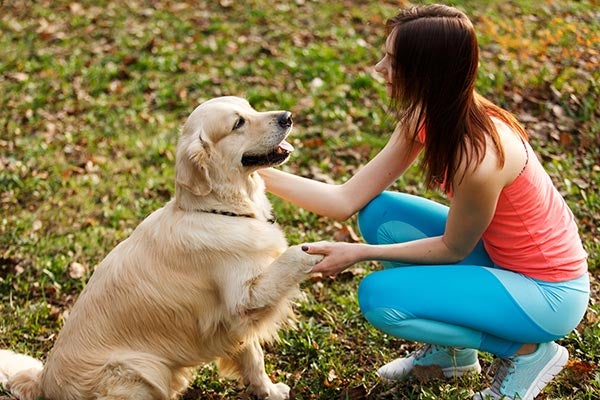How to Choose the Right Method for Successful Dog Training
How to Choose the Right Method for Successful Dog Training
Blog Article
Essential Tips for Successful Dog Training: An Overview for Animal Owners
Effective pet dog training is a diverse procedure that needs a critical technique customized to both the family pet's temperament and the proprietor's purposes. Recognizing exactly how to browse these challenges can considerably improve the training experience, ultimately transforming the relationship between proprietor and canine.
Comprehending Dog Actions
Comprehending pet dog habits is necessary for reliable training and fostering a harmonious connection in between canines and their owners. dog training. Pet dogs interact mainly through body language, vocalizations, and actions, making it vital for proprietors to analyze these signals properly.

Socializing plays a significant role in dog actions; direct exposure to different environments, people, and various other pets can substantially affect a pet's personality. In addition, variables such as type qualities and private personality need to guide training methods, as some types may have specific behavioral characteristics that demand customized strategies. By comprehending these components, proprietors can create a supportive atmosphere that motivates favorable habits, causing effective training results and a much deeper bond with their pet dogs.
Establishing Constant Commands
Reliable communication with your pet dog starts with developing consistent commands. This foundational aspect of training is critical for promoting understanding between you and your pet dog. Consistency in the commands you make use of guarantees that your canine can dependably link specific words or expressions with the wanted actions.
When selecting commands, select clear, distinctive words that are easy to say and differentiate from one another. Stay clear of utilizing similar-sounding commands that might confuse your dog. For instance, using "rest" and "remain" is appropriate, but "sit" and "struck" can cause misunderstandings.
Furthermore, maintain the very same tone and volume for every command. Dogs are sensitive to vocal hints, so differing your tone can create confusion.
It is similarly essential to ensure that all household members get on the very same page concerning the commands utilized. A united front in command usage will avoid combined signals and reinforce the discovering procedure.
Favorable Support Strategies
The power of favorable reinforcement in canine training depends on its capacity to motivate wanted behaviors through benefits and praise. This strategy is based in the principle that habits followed by favorable results are more probable to be duplicated. By integrating positive support right into your training program, you can efficiently form your canine's behavior in a useful fashion.
To execute favorable support, it's crucial to recognize what inspires your pet, whether it be deals with, toys, or spoken praise. When your dog carries out a wanted action, such as resting on command, instantly compensate them with a reward or love. This organization between the command and the favorable end result enhances their understanding.
It's important to timing the rewards properly; supplying the reinforcement within seconds of the wanted behavior aids your dog make the connection (dog training). In addition, uniformity is essential-- ensure that all member of the family make use of the same commands and reward systems to stay clear of confusion

Gradually, you can reduce the frequency of deals with as your pet learns the habits, transitioning to applaud or recurring benefits. This technique not just cultivates a solid bond in between you and your pet but also promotes a positive knowing atmosphere, making educating an enjoyable experience for both.
Socialization and Interaction
Constantly exposing your canine to a variety of atmospheres, individuals, and various other animals is critical for their social growth. Socializing needs to start early, preferably during the vital window of 3 to 14 weeks, when young puppies are most receptive to new experiences. However, older canines can likewise take advantage of continuous socialization efforts.
Present your pet dog to various setups, such as parks, pet-friendly shops, and metropolitan locations. This direct exposure assists them adapt to various stimulations, reducing stress and anxiety and concern actions. Motivate positive interactions with various other pets and individuals, ensuring that these encounters are controlled and secure to foster confidence.
Utilize structured playdates with well-mannered pets, as this can improve your dog's social abilities and teach them ideal behavior. Obedience courses and training sessions also give exceptional opportunities for socialization, permitting your pet dog to interact with others in a supervised setting.
Monitor your dog's body movement during communications, as this will assist you determine their comfort degree. Gradually boost direct exposure to more difficult circumstances while guaranteeing that each experience declares. A well-socialized canine is more probable to display balanced habits, making our website them a happiness to have in any setting.
Resolving Common Training Obstacles
Every canine proprietor will certainly encounter training difficulties at some time, Visit Your URL no matter their pet dog's age or socializing level. Determining typical concerns such as stubbornness, interruptions, and terror can help in creating effective techniques for renovation.

Progressively present diversions as the canine ends up being more competent in commands. Short, frequent training sessions are also effective in keeping focus.
Fearfulness can hinder a dog's learning procedure. Progressive desensitization to the source of fear, coupled with favorable reinforcement, can assist minimize stress and anxiety. Persistence is essential; never compel a dog right into a scenario that triggers distress, as this may worsen the problem.
Eventually, understanding and addressing these typical difficulties with a structured method will certainly foster an extra effective training experience, reinforcing the bond between pet dog and owner while advertising reliable knowing.
Verdict
In recap, successful pet dog training counts on a thorough understanding of canine habits, the facility of constant commands, and the application of favorable reinforcement strategies. Socialization plays an important role in establishing well-adjusted pets, while attending to common training difficulties requires persistence and adaptability. web By carrying out these essential methods, pet owners can cultivate a strong bond with their pet dogs and advertise desirable habits, inevitably bring about a harmonious connection in between humans and their canine buddies.
Recognizing pet dog habits is important for efficient training and cultivating an unified relationship between pooches and their proprietors.Socializing plays a significant duty in dog behavior; exposure to different settings, individuals, and other animals can dramatically impact a canine's character.The power of favorable support in pet training exists in its ability to motivate preferred habits with incentives and appreciation. By including favorable support right into your training routine, you can effectively shape your dog's behavior in a constructive way.
In recap, effective pet training counts on an extensive understanding of canine actions, the facility of consistent commands, and the application of positive reinforcement techniques.
Report this page